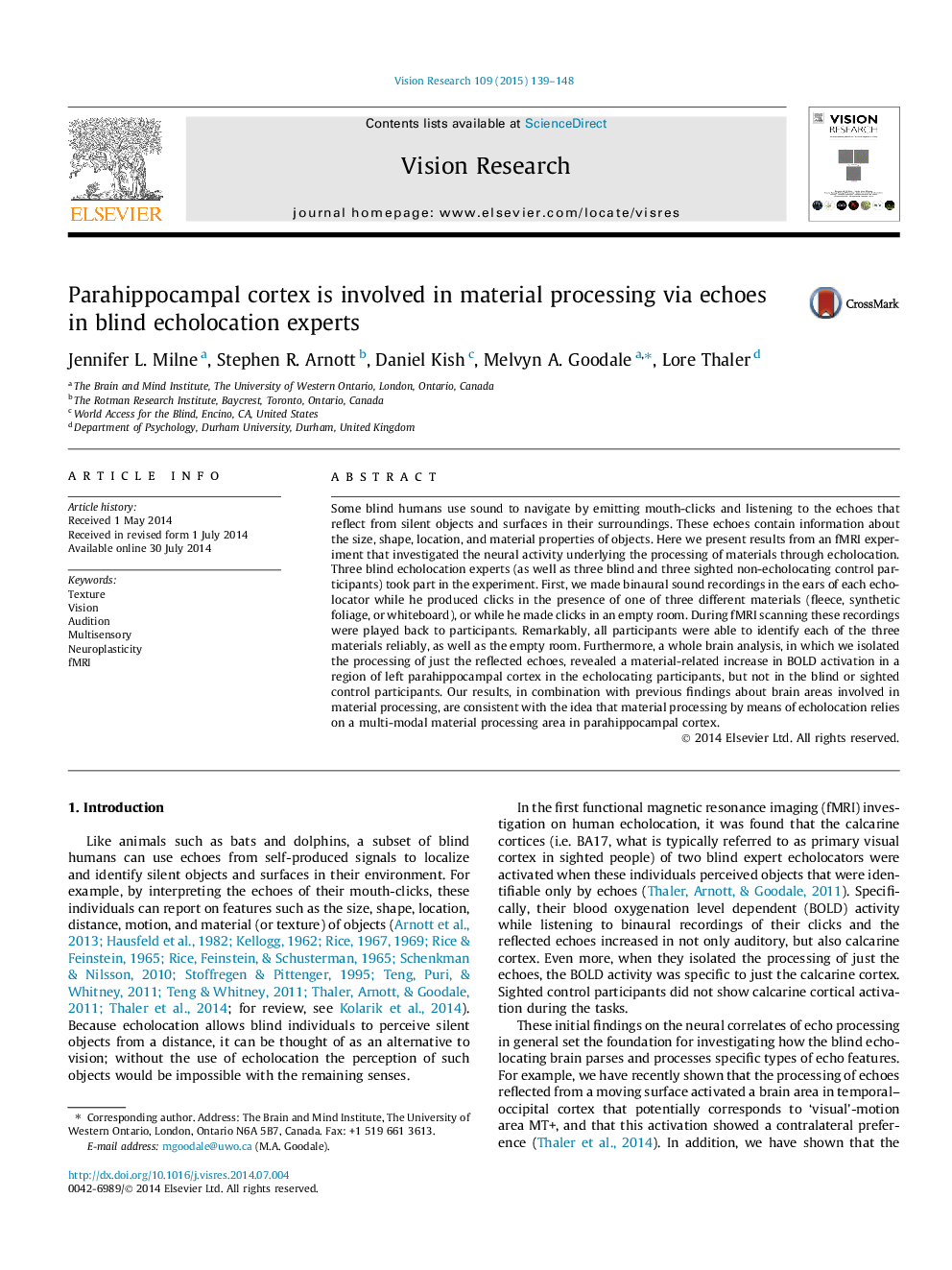| Article ID | Journal | Published Year | Pages | File Type |
|---|---|---|---|---|
| 6203203 | Vision Research | 2015 | 10 Pages |
â¢Observed material-echo-related activation within left parahippocampal cortex (PHC).â¢Results similar to visual- and auditory-material activation found previously.â¢Results consistent with the idea of a multi-modal material processing area in PHC.
Some blind humans use sound to navigate by emitting mouth-clicks and listening to the echoes that reflect from silent objects and surfaces in their surroundings. These echoes contain information about the size, shape, location, and material properties of objects. Here we present results from an fMRI experiment that investigated the neural activity underlying the processing of materials through echolocation. Three blind echolocation experts (as well as three blind and three sighted non-echolocating control participants) took part in the experiment. First, we made binaural sound recordings in the ears of each echolocator while he produced clicks in the presence of one of three different materials (fleece, synthetic foliage, or whiteboard), or while he made clicks in an empty room. During fMRI scanning these recordings were played back to participants. Remarkably, all participants were able to identify each of the three materials reliably, as well as the empty room. Furthermore, a whole brain analysis, in which we isolated the processing of just the reflected echoes, revealed a material-related increase in BOLD activation in a region of left parahippocampal cortex in the echolocating participants, but not in the blind or sighted control participants. Our results, in combination with previous findings about brain areas involved in material processing, are consistent with the idea that material processing by means of echolocation relies on a multi-modal material processing area in parahippocampal cortex.
